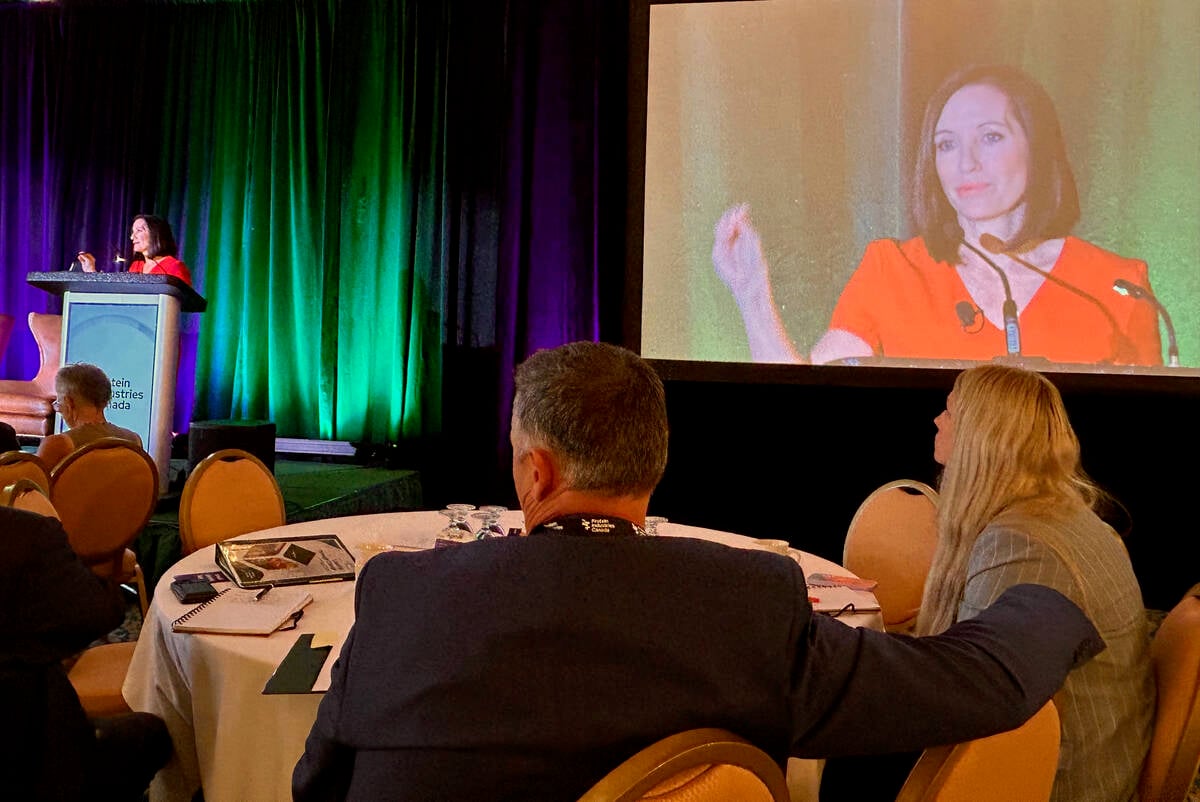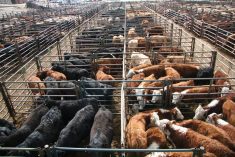CALGARY — The Alberta government has made some tough cuts to keep its three-year deficit reduction plan on target.
In a televised speech Jan. 17, premier Ralph Klein said the big four departments of advanced education, health care, schools and social services will be cut an average of 16 percent. Others will be slashed as much as 30 percent. There will be no tax increases or introduction of a sales tax.
For every dollar spent in the province, 65 cents goes for advanced education, health care, schools and social services. The provincial deficit is around $2.5 billion, with a total debt of $14.3 billion. That means a debt of $5,500 for each person in the province. Revenues total $11.5 billion but $14. 1 billion was spent.
Read Also

Canada told trade crisis solutions in its hands
Canadians and Canadian exporters need to accept that the old rules of trade are over, and open access to the U.S. market may also be over, says the chief financial correspondent for CTV News.
During a press conference Jan. 18, the premier and ministers responsible for the four departments announced the specific cuts. Further details are coming in the Feb. 24 provincial budget.
- Education spending will be reduced by 12.4 percent which means cuts of $239 million from the $1.92 billion budget. This is the smallest reduction for any government department.
The biggest change comes with the reduction of the 140 school boards to 60 across the province to chop administrative costs, said education minister Halvar Jonson.
Starting immediately the province will take over funding for elementary and secondary education in public and separate school districts. The government will collect and distribute all property taxes to pay for education. School boards will no longer requisition local resources, said Jonson.
Kindergarten grants are reduced by 50 percent.
- Health-care money will shrink by 17.6 percent, or $4.17 billion, to $3.43 billion. This means $734.1 million will be removed from health spending by 1997.
Minister Shirley McLellan said health-care spending has doubled in 10 years partly because costs have gone up by 13 percent. To save money there will be a shift to more community-based health programs rather than hospital-centred care. About $110 million will be reallocated to home and community care.
There will likely be a cost-sharing program developed for non-essential services. A government-appointed committee is to report Jan. 31 on a basic care definition.
There will be fewer acute-care beds available, less duplication of services between hospitals and capital construction has been frozen for three years, said McLellan.
Grants to Calgary and Edmonton hospital boards will be cut by $270 million.
Another $20 million has been set aside for helping employees make job adjustments.
- Post-secondary education will lose 14.2 percent as its budget goes from $1.23 billion to $1.05 billion.
A new system of grants for all institutions will be introduced. There will also be more adult education available through long distance learning and self-directed programs.
There will be no tuition fee increases for 1994-95 year but increases will come the following year said advanced education minister Jack Ady.
Grants to colleges, technical schools and universities will be reduced by 11 percent in 1994-95; seven percent and three percent in the next two years respectively.
- Social services takes the biggest cut of the four with spending down by 18.3 percent, or $1.79 billion to $1.46 billion. There will be an emphasis on getting people off welfare into jobs and programs will be available to help seniors stay in their own communities said the social services minister.
Retraining programs
Mike Cardinal said by 1996-97 the province expects the welfare roll to be reduced to 62,000 cases. Over $60 million will be spent on employee retraining programs to help people get off the public dole.
The day-care budget of $70.7 million will go down by $14 million over the next three years. This will come as a reduction in the operating allowance paid to day-care operators from $83 to $63 per child space.
Cardinal added operators may raise day-care fees by $10. There will be no reduction in subsidized day care to low-income families. There are 32,000 day-care spaces in the province but only 20,000 are filled.















